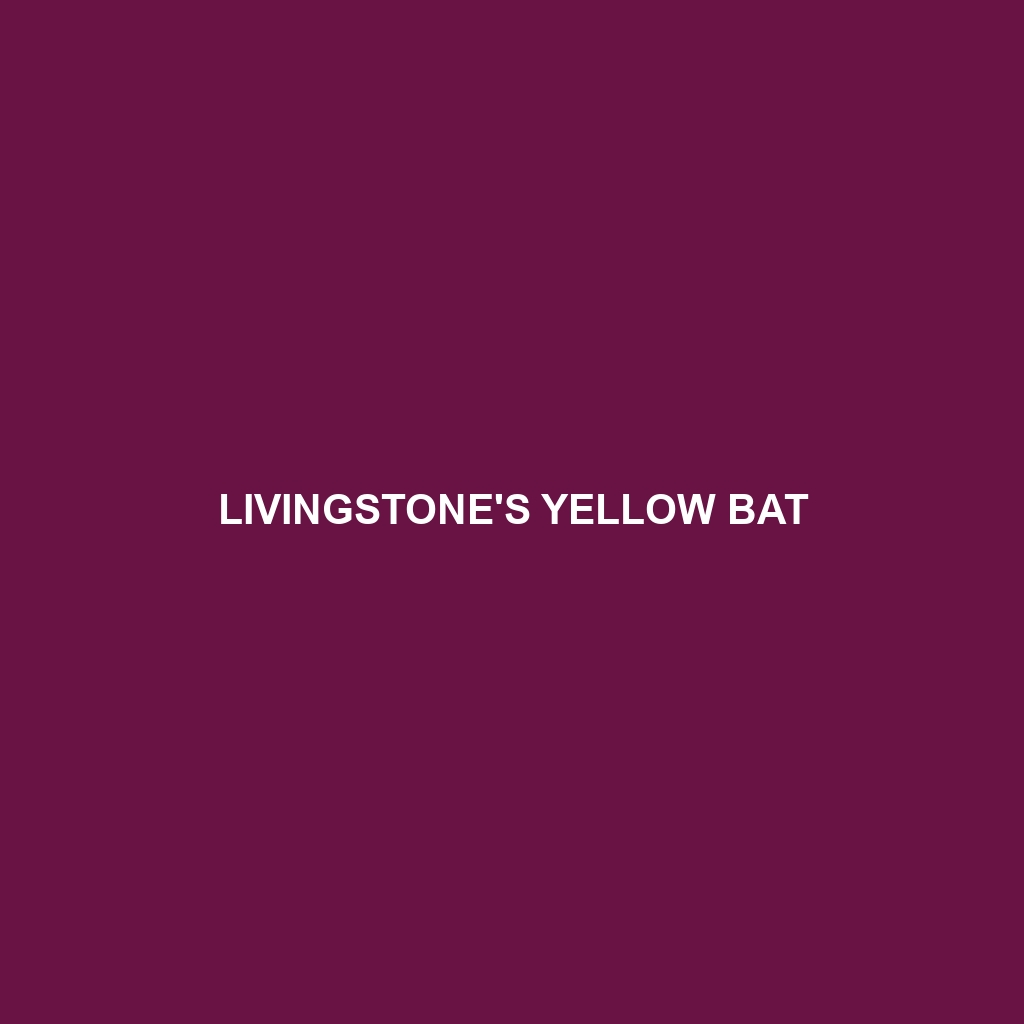Common Name: Livingstone’s Yellow Bat
Scientific Name: Ethops aurantiacus
Habitat:
Livingstone’s Yellow Bat is primarily found in the tropical and subtropical regions of Africa, particularly in countries such as Zambia, Malawi, and parts of Tanzania. This species thrives in moist evergreen forests, wet montane zones, and riparian woodlands where they roost in the foliage of tall trees, utilizing dense vegetation for cover.
Physical Characteristics:
Livingstone’s Yellow Bat is a small to medium-sized bat, measuring about 9-12 cm in body length with a wingspan of approximately 29-33 cm. As its name suggests, this bat has a vibrant yellow to golden-hued fur, which contrasts with its darker wings. Its distinctive features include large ears, a pointed snout, and small, sharp teeth, adapted for its insectivorous diet. The bat’s unique coloration aids in camouflage among the foliage of its forest habitat.
Behavior:
This bat is primarily nocturnal, emerging at dusk to forage for food. Livingstone’s Yellow Bat is known for its agile flying abilities, which allow it to navigate through dense forest canopies with ease. The species is social, often found in small colonies, and exhibits a variety of vocalizations used for communication. Roosting in clusters during the day provides safety from predators.
Diet:
Livingstone’s Yellow Bat predominantly feeds on insects, such as moths, beetles, and flies. It employs echolocation to hunt efficiently in the dark, showcasing remarkable agility as it captures prey mid-flight. The bat plays a critical role in controlling insect populations within its habitat, contributing to the ecological balance.
Reproduction:
Reproductive activities in Livingstone’s Yellow Bat typically peak during the wet season, between November and March, when food is abundant. Females usually give birth to a single pup after a gestation period of about 50-60 days. Maternal care is evident as mothers nurse their young for several weeks before the pups become independent, capable of foraging on their own.
Conservation Status:
The IUCN Red List designates Livingstone’s Yellow Bat as vulnerable due to habitat destruction and fragmentation from logging, agriculture, and human encroachment. Conservation efforts are crucial to preserving their natural habitats and ensuring the species’ survival.
Interesting Facts:
Livingstone’s Yellow Bat is named after the Scottish explorer David Livingstone, who was known for his explorations in Africa. This species is one of the few bats that exhibit sexual dimorphism, with males typically being smaller than females. Furthermore, their stunning coloration not only provides camouflage but may also play a role in mating displays.
Role in Ecosystem:
Livingstone’s Yellow Bat serves an essential role in its ecosystem as both a predator and prey. By consuming large quantities of insects, it helps maintain insect population levels, preventing outbreaks. Additionally, their droppings provide nutrients for the forest floor, encouraging plant growth and benefiting other species within their habitat.
